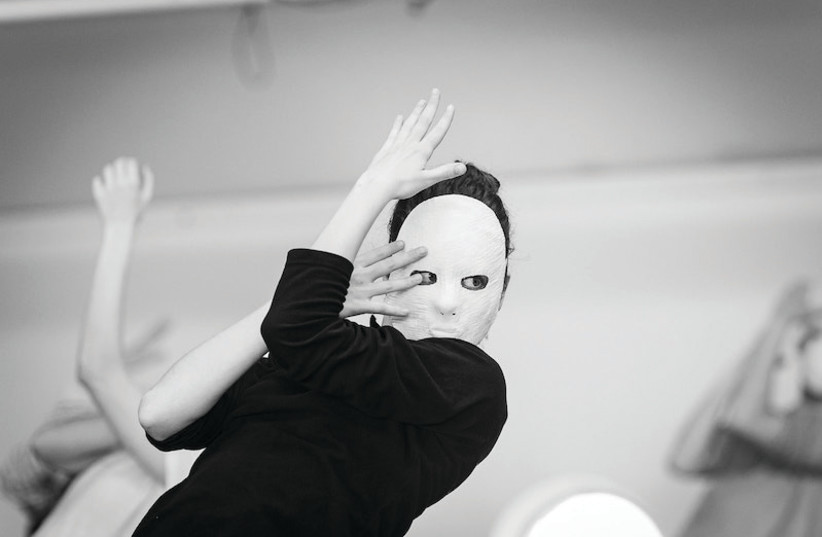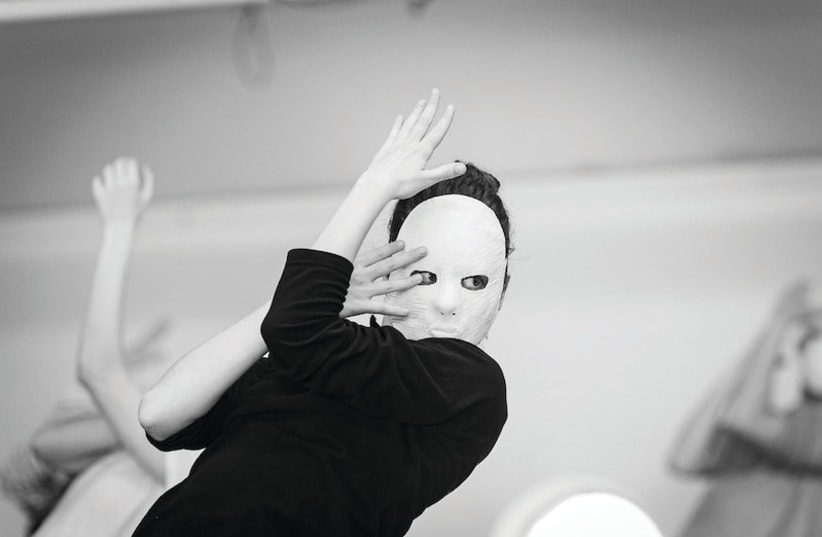If you were to stand with your legs slightly apart and point one finger into the air above your head, you might be appropriating an iconic disco movement. Upon stubbing your toe on the bed’s corner, if you said “doh,” that would be a reference to Matt Groening’s Homer Simpson. If a person with long hair threw up their locks with a pencil instead of a hair tie, some would say they had appropriated Chinese culture.
Our daily lives are full of appropriation, of references and quotations of other images, works of art, and cultures. Whether we rip these memes intentionally or by chance, few actions are completely new or unique. And yet, certain appropriations are considered offensive while others go unnoticed.
In his work for the Batsheva Ensemble, acclaimed choreographer and performer Hillel Kogan seeks to draw a line under these distinctions. Appropriation, which will premiere in mid-March, features the cast of Batsheva Dance Company’s young troupe in all their glory. The work was meant to premiere in October of 2023 but was postponed by the Israel-Hamas war.
Kogan has coined the work, “a ballet,” unabashedly appropriating a well-patented format into the contemporary dance realm.
“I call it a ballet because of ballet’s place in the work. In a symbolic way, ballet is the major appropriator. Ballet is a place where all the wrongs meet; body image, ageism, gender, work relations between the boss and workers, relation to history, exoticism and foreignness, condescension, the white, the European, colonial. Ballet doesn’t see itself as folk, as ethnic, as Russian or French. Its ethnicity is invisible,” says Kogan.


Ballet was one of many movement languages sampled and decontextualized during the process of Appropriation. The creation began in a completely other space, in an exploration of the dancers’ personal materials and stories led by Kogan and dramaturg Sharon Zuckerman Weiser.
“My process always starts with a search for materials in the field or space I’m working in,” explains Kogan. “We were roaming around in the dancers’ lives, what they’re like, what is it like being a dancer in Batsheva. We talked with each dancer about where they came from, if they were in competitions, if they have a background in ballet, street dance, hip-hop, or something else.”
Appropriation was the first process Kelis Robinson, 21, encountered upon joining the Batsheva Ensemble. Hailing from Canada, Robinson was familiar with the debate surrounding appropriation, however she wasn’t expecting to contend with it so quickly in Israel.
“We were exploring tricks and optical illusions and at a certain point, there started to be an issue, a discussion of cultural appropriation. We started to go more into that. The piece took a huge turn.
“Appropriation has a different context here than it does in America or Canada. Hillel wanted to emphasize the bad side of appropriation, the offensive side of it,” says Robinson.
Among the smorgasbord of styles brought to the table are ballet, breakdance, b-boying, voguing, whacking, Chinese dance theater, jazz, musical theater, various folk dances, gymnastics, and capoeira. For much of the process, Kogan guided the dancers through improvisational sessions.
“In these improvisations, we got stuck in traps. Are we allowed to talk about ‘the other?’ To quote? To reference? To dance hip-hop? To do a battle? To do voguing? To take from here and there? In the composition, we are met with this trap and it creates discourse.
“The conversation, the way I work, really involves the dancers. We talked with them about where these traps and questions meet them. Someone who comes from Canada, or the US, or France with this or that skin color… it becomes part of the work.
I don’t want to put the dancer in a place of blind obedience. And then the issue arises; is it ok or not ok to touch on these different materials? In that way, we got to the elephant of appropriation.
“Instead of making it something we avoid and are afraid of, we said let’s hang the sign on the wall, to make it clear that this is our subject, the issue we’re dealing with. Because it interests me, in my work, and in my meeting with them. So, appropriation came up and if we’re talking about it, then everything gets focused through this lens,” says Kogan.
WHILE APPROPRIATION may be a word with a negative context, there is nothing unpleasant about the piece. The dancers, all young and brilliantly talented, are presented simply and in their full glory, turning, leaping, flipping, twerking, and belting across the stage.
Even in moments where Kogan intentionally provokes by purloining beloved excerpts from canonical works, the eye can’t help but feast on the dancers’ form and function. Kogan laughingly quotes Riki Gal’s song “I Have a Weakness for Dancers,” pointing at the age-old obsession with the role of a dancer. And Gal isn’t alone. For centuries, artists have called on dancers as muses and have immortalized them in sculpture, paintings, and photographs.
"Dancers are superhuman"
“Dancers are superhuman, they don’t walk on the earth, they walk on stage, they are beyond what people can do. What is it for them to be an object of observation, clay in the hands of the creator? What is it like to be an object observed? A sculpture doesn’t know it’s being looked at. The dancers know they are. They are dancing to be looked at,” says Kogan.
To make this work come to life, Kogan called on a group of collaborators including art director Laetitia Boulud, lighting designer Nadav Barnea, costume designer Evelyn Terdiman, and mask artists Matan Meirson and Raz Sintova.
Kogan brings his signature wit and cutting critique to this work. As established in previous creations such as “We Love Arabs” and “Thisispain,” Kogan is not one to shy away from points of contention rather he applies an almost ayurvedic amount of pressure to society’s sore spots until they transform into poetry.
Having spent years working in various roles for the renowned troupe alongside an international career as a choreographer and performer outside the bounds of the company, Appropriation marks Kogan’s first commission for Batsheva.
“I’m appropriating Batsheva Dance Company. I’m using Batsheva Dance Company as my property. They’re appropriating me and I them. I don’t have a company. I don’t have all these dancers. I was invited to take the power the company has – the definition of appropriation to take over property or wealth and make it yours. I’m not making a work for Batsheva, I’m making a work for Hillel Kogan.”
“Appropriation” will be performed by the Batsheva Ensemble on March 18, 19, 21, and 22 at the Suzanne Dellal Centre in Tel Aviv. For more information, visit www.batsheva.co.il
